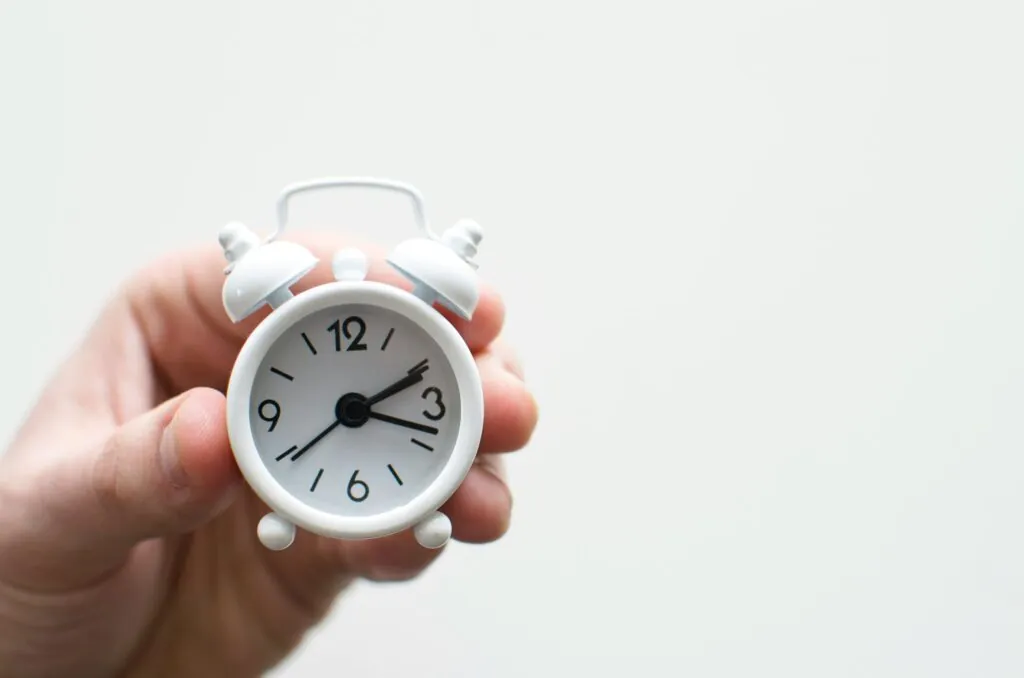Philadelphia Product Liability Lawyer
At Fulginiti Law, we recognize the devastating impact defective products can have on the lives of consumers, workers, and families. From automobile defects to industrial equipment malfunctions, we are committed to holding companies accountable for negligence. Our experienced legal team is here to help you recover compensation for your injuries while also preventing future harm by advocating for safer practices across industries.
What is Product Liability?
Product liability law ensures that companies involved in the design, manufacture, distribution, or sale of defective products can be held accountable for injuries those products cause. These laws are in place to protect consumers and workers from unsafe goods and provide them with legal recourse when harm occurs. Product liability claims are complex, as they require determining who along the supply chain is responsible for the defect.
At Fulginiti Law, we offer extensive experience in product liability cases, helping victims seek justice—whether through individual claims or class action lawsuits—and pursue compensation for their losses.
Types of Product Liability
There are three primary ways in which a product may be considered defective under product liability law:
Design Defects
Design defects exist when a product is inherently dangerous due to a flaw in its engineering or blueprint. Even if the product is made perfectly according to its specifications, the design flaw makes it unsafe for consumers.
Examples of Design Defects:
- Automobiles: High rollover risk in SUVs due to improper weight distribution.
- Industrial Machinery: Machines designed without essential safety features, such as emergency shut-off buttons.
- Home Appliances: Space heaters without automatic shut-off, posing fire hazards.
- Medical Devices: Implants that deteriorate faster than intended, causing harm.
- Sports Helmets: Inadequate padding in bike or football helmets, increasing the risk of traumatic brain injuries.
Manufacturing Defects
A manufacturing defect occurs when the product is not built according to its intended design due to errors during the production process. These defects make an otherwise safe product dangerous.
Examples of Manufacturing Defects:
- Automobile Parts: Faulty brake pads that wear out prematurely, causing accidents.
- Ladders: Defective rivets leading to sudden collapse during use.
- Warehouse Shelving: Poorly welded joints causing shelving units to fall.
- Medical Devices: Hip implants that fracture due to improper assembly.
- Household Electronics: Microwaves with defective electrical wiring causing sparks or fire.
Marketing Defects (Failure to Warn)
Marketing defects occur when a product lacks appropriate warnings, instructions, or labels informing consumers of potential risks associated with its use. Even if the product is well-designed and properly manufactured, inadequate labeling or misleading advertising can render it dangerous.
Examples of Marketing Defects:
- Automobiles: Lack of warning about the dangers of using rear-facing child seats with active airbags.
- Cleaning Products: Inadequate warnings about toxic fumes when mixed with other chemicals.
- Power Tools: Instructions that fail to highlight necessary safety precautions.
- Medical Devices: Insufficient disclosure about potential side effects or risks.
- Children’s Toys: Inadequate labeling about age-appropriate use, leading to choking hazards.
Key Products Involved in Product Liability Cases
Product liability claims arise from a wide variety of defective products. Some of the most common categories include:
Automobiles and Vehicle Components
Defective vehicles and automotive parts are among the most frequent sources of product liability claims. Even a single malfunctioning component can lead to serious accidents and injuries.
- Faulty brakes that fail unexpectedly.
- Airbags that deploy with excessive force, causing injuries.
- Defective tires prone to blowouts.
- Seatbelt malfunctions that fail to secure passengers properly during a crash.
Industrial Equipment and Tools
Workers rely on heavy machinery and industrial equipment to perform dangerous tasks safely. Defective equipment can result in catastrophic injuries.
- Forklifts with defective hydraulics, causing instability.
- Cranes with faulty cables, leading to dropped loads.
- Saws without proper safety guards, increasing the risk of amputations.
- Press machines that lack functional emergency shut-off buttons.
Medical Devices and Pharmaceuticals
Patients depend on medical devices and pharmaceuticals for their health. Defects in these products can lead to severe injuries or death.
- Hip implants that degrade prematurely, requiring multiple surgeries.
- Pacemakers that stop working due to battery failure.
- Medications without proper warnings about life-threatening side effects.
- Surgical mesh products that cause internal injuries.
Home Appliances and Electronics
Defective home appliances can cause fires, electric shocks, and flooding, posing serious hazards to families.
- Refrigerators with electrical malfunctions causing fires.
- Dishwashers prone to leaking and flooding.
- Space heaters that overheat and ignite surrounding materials.
- Microwaves with faulty doors, exposing users to radiation.
Ladders, Scaffolding, and Fall-Protection Equipment
Falls are a common cause of workplace injuries, and defective ladders, scaffolding, and harnesses only increase the risk.
- Extension ladders with defective locking mechanisms.
- Scaffolding that collapses under normal weight loads.
- Harnesses with weak stitching that fail during use.
- Helmets with poor impact resistance, leading to head injuries.
Warehouse Equipment and Shelving Systems
Warehouses rely on shelving systems, pallet jacks, and conveyor belts to operate safely. Defective equipment can cause severe injuries and property damage.
- Shelving units that collapse unexpectedly.
- Conveyor belts prone to sudden stoppages, leading to injuries.
- Pallet jacks with faulty hydraulics that drop heavy loads without warning.
Children’s Products and Toys
Products intended for children must meet strict safety standards. Defective toys and products can result in serious injuries or even fatalities.
- Toys with detachable small parts that create choking hazards.
- Strollers with defective brakes that fail to lock.
- High chairs prone to tipping over.
- Baby monitors that overheat, causing fire hazards.
Injuries Caused by Defective Products
Defective products can lead to a wide range of injuries, depending on the type of product, how it malfunctioned, and the circumstances of use. Injuries resulting from product liability cases can vary in severity, from minor accidents to life-threatening conditions. Some injuries may require immediate emergency care, while others may develop over time, especially when related to medical devices or hazardous chemicals. Regardless of the severity, it is crucial for injured individuals to seek medical treatment promptly and pursue legal action to hold the responsible parties accountable.
Burns and Fires
Burns are common injuries associated with defective electrical products, appliances, and chemical-based items. Fires caused by product malfunctions can result in severe property damage and life-threatening injuries.
Examples of Products:
- Home Appliances: Space heaters, ovens, microwaves, or dryers that overheat or spark fires.
- Electronics: Faulty phone chargers or batteries that overheat and ignite.
- Cleaning Products: Chemicals that combust or cause burns upon contact.
Types of Injuries:
- First-degree, second-degree, or third-degree burns.
- Smoke inhalation injuries from product-related fires.
- Permanent scarring and disfigurement requiring reconstructive surgery.
Head Injuries and Traumatic Brain Injuries (TBIs)
Defective helmets, fall protection equipment, or sports gear can leave users vulnerable to head injuries. Improper safety equipment or malfunctioning products can fail to protect consumers, leading to concussions or severe brain trauma.
Examples of Products:
- Sports Helmets: Football, bike, or construction helmets with inadequate padding.
- Ladders and Scaffolding: Defective locking mechanisms causing falls.
- Automobiles: Malfunctioning airbags or seatbelts that fail during collisions.
Types of Injuries:
- Concussions and mild traumatic brain injuries (TBIs).
- Skull fractures and internal bleeding.
- Long-term cognitive issues, including memory loss or emotional instability.
Fractures and Orthopedic Injuries
Broken bones and orthopedic injuries are common in cases involving falling equipment, vehicle malfunctions, or industrial tools. These injuries often require surgeries, physical therapy, and extended recovery periods.
Examples of Products:
- Ladders and Fall-Protection Gear: Failure of safety equipment resulting in falls from heights.
- Automobiles: Defective brakes or tires causing crashes and fractures.
- Warehouse Equipment: Shelving units that collapse, leading to crushing injuries.
Types of Injuries:
- Broken bones, dislocations, and fractures.
- Torn ligaments or tendons.
- Chronic pain or limited mobility requiring physical therapy or surgery.
Lacerations and Amputations
Some defective products, especially industrial tools and power equipment, can cause severe lacerations or amputations. These injuries are often life-altering, requiring extensive medical treatment and rehabilitation.
Examples of Products:
- Power Tools: Saws or cutters without proper safety guards.
- Industrial Equipment: Machinery with faulty stop mechanisms.
- Children’s Toys: Products with sharp edges or poorly secured parts.
Types of Injuries:
- Deep cuts requiring stitches or surgery.
- Loss of fingers, toes, or limbs.
- Nerve damage leading to chronic pain or loss of sensation.
Internal Injuries and Organ Damage
Defective medical devices or pharmaceuticals can cause significant internal injuries or organ damage. These injuries may not be immediately visible and often require detailed medical investigation to diagnose properly.
Examples of Products:
- Pacemakers and Implants: Malfunctioning medical devices leading to heart complications.
- Surgical Mesh: Internal injuries from defective implants.
- Contaminated Pharmaceuticals: Drugs with toxic substances causing liver or kidney damage.
Types of Injuries:
- Organ damage (liver, kidney, heart, etc.).
- Infections or sepsis resulting from defective implants.
- Gastrointestinal issues caused by dangerous drugs.
Respiratory Issues and Toxic Exposure
Inhalation of toxic fumes or exposure to hazardous chemicals due to product defects can result in respiratory injuries or long-term health conditions. This type of injury is common in industrial workplaces or from improperly labeled consumer products.
Examples of Products:
- Cleaning Agents: Products releasing toxic fumes without proper warnings.
- Household Appliances: Defective gas-powered appliances leaking carbon monoxide.
- Construction Materials: Exposure to asbestos-containing products.
Types of Injuries:
- Chronic respiratory conditions like asthma or COPD.
- Carbon monoxide poisoning.
- Lung infections or pulmonary damage from toxic exposure.
Poisoning and Allergic Reactions
Ingesting or coming into contact with contaminated food, medications, or improperly labeled products can cause poisoning, severe allergic reactions, or other medical emergencies. These cases often involve mislabeling or failure to warn about allergens and toxic substances.
Examples of Products:
- Food Products: Contaminated food causing food poisoning or allergic reactions.
- Medications: Prescription drugs with undisclosed side effects.
- Cosmetics: Products containing allergens or toxic substances without proper labeling.
Types of Injuries:
- Anaphylaxis (a life-threatening allergic reaction).
- Neurological damage from toxic poisoning.
- Gastrointestinal distress or organ failure from contaminated food or drugs.
Fatal Injuries and Wrongful Death
In severe cases, defective products can cause fatal injuries, resulting in wrongful death lawsuits. Surviving family members have the right to pursue compensation for the loss of their loved one, including funeral expenses and emotional damages.
Examples of Products:
- Automobiles: Vehicle defects causing fatal crashes.
- Medical Devices: Pacemaker failures leading to sudden cardiac death.
- Industrial Machinery: Fatal accidents caused by malfunctioning equipment.
Types of Damages in Wrongful Death Cases:
- Funeral and burial expenses.
- Loss of income and financial support.
- Emotional pain and suffering for surviving family members.
Impact of Injuries on Victims’ Lives
Injuries caused by defective products often have lasting impacts on the victim’s life, including:
- Physical limitations: Loss of mobility or chronic pain affecting daily activities.
- Emotional trauma: Depression, anxiety, or PTSD resulting from the injury.
- Financial stress: Mounting medical bills and loss of income due to an inability to work.
- Reduced quality of life: Inability to participate in hobbies, family activities, or social events.
Who Can Be Held Liable for Defective Products?
Product liability is not limited to manufacturers. Responsibility can extend to multiple parties along the supply chain, including those involved in the design, distribution, and sale of the product. At Fulginiti Law, we conduct thorough investigations to identify every liable party.
Potentially Liable Parties
Manufacturers
The primary responsibility often lies with the manufacturer. They are responsible for designing, testing, and producing the product. A defect in design or manufacturing makes them directly liable.
Distributors
Distributors move products through the supply chain. If improper handling or storage damages the product, causing it to become unsafe, they can be held liable.
Retailers
Even if the retailer did not manufacture the product, they can still be responsible for selling defective items. Retailers have a duty to sell products that are safe for consumer use.
Wholesalers
Companies that distribute large quantities of products to retailers may also share liability if they knowingly distribute faulty items.
Service Providers and Installers
If a product is improperly assembled, installed, or repaired by a third-party service, they may bear liability for any injuries resulting from their negligence.
Third-Party Component Manufacturers
If the defect lies in a specific part or component, such as faulty airbags in a car, the company that produced that part may be held accountable.
Compensation Available in Product Liability Cases
At Fulginiti Law, we help injured individuals recover the full range of compensation they are entitled to under the law. Compensation in product liability cases typically covers both economic and non-economic damages.
Economic Damages
Medical Expenses
This includes emergency room visits, surgeries, hospital stays, rehabilitation, physical therapy, and ongoing medical care related to your injury.
Lost Wages
If your injury prevents you from working, you can recover compensation for the income you’ve lost. This also includes future earnings if the injury results in long-term disability.
Property Damage
If the defective product damaged personal property (e.g., a faulty appliance caused a house fire), you may be entitled to reimbursement for those losses.
Non-Economic Damages
Pain and Suffering
Compensation for physical pain, emotional trauma, and a reduced quality of life caused by the injury.
Emotional Distress
Psychological impact, such as anxiety, depression, or PTSD, resulting from the injury.
Punitive Damages
In cases involving gross negligence or willful misconduct, the court may award punitive damages to punish the responsible party and deter similar conduct in the future.
Steps to Take After Being Injured by a Defective Product
Experiencing harm from a defective product can be overwhelming, but taking the right steps early on is crucial to protect your health, legal rights, and future compensation. Whether the injury involves a faulty household appliance, industrial machinery, or medical device, the actions you take immediately after the incident will help strengthen your product liability claim. Here’s a step-by-step guide on what to do if you find yourself involved in a product liability situation:
1. Seek Immediate Medical Attention
Your health and safety should be your top priority. If you’ve been injured by a defective product, seek medical treatment immediately—even if the injury seems minor. Prompt medical care not only ensures your well-being but also creates official medical records that link your injuries to the defective product.
Follow-up care: Be diligent in following your doctor’s treatment plan and keep all medical records and receipts, as they will be essential in calculating damages.
Detailed documentation: Explain to the medical provider how the injury occurred (e.g., “A faulty ladder collapsed under me”). This will help establish the connection between the product and your injury.
2. Preserve the Defective Product
If possible, do not dispose of the defective product or any of its packaging. Preserving the product in its current state is essential for evidence. The product itself will serve as critical proof in your case, allowing experts to examine the defect and determine whether it was a design flaw, manufacturing error, or a failure to provide adequate warnings.
Take pictures of the product and damage: Photograph the product from multiple angles, especially if it shows signs of damage or malfunction.
Keep packaging and instructions: Save any packaging, receipts, manuals, and warning labels that came with the product. This can help demonstrate misleading or inadequate marketing.
Store the product safely: If the defective product is dangerous, store it in a safe place where it cannot cause further harm.
3. Document Everything Related to the Incident
Detailed documentation can significantly strengthen your product liability case. Create a written account of what happened as soon as possible after the incident while your memory is still fresh. Include as much detail as possible, such as:
- Time, date, and location of the incident.
- How the product was used at the time of the injury (e.g., used according to instructions).
- What went wrong (e.g., the product malfunctioned, lacked necessary warnings, or failed suddenly).
- Injuries sustained: Describe the physical harm and how it has impacted your daily life.
Additionally, if there were any witnesses, collect their contact information and ask them to provide written statements describing what they saw.
4. Report the Incident to the Manufacturer or Retailer
It’s essential to notify the manufacturer, retailer, or distributor about the defective product as soon as possible. This formal notification may trigger a product investigation or recall, which could strengthen your case. Be cautious, however—when reporting the incident:
Stick to the facts: Provide a factual account of what happened without admitting fault or exaggerating details.
Keep copies of all correspondence: Save emails, letters, or responses from the manufacturer or retailer, as they can be useful evidence in your claim.
Avoid returning the product immediately: If the retailer or manufacturer asks you to return the product, consult an attorney first to ensure it won’t compromise your case.
5. Check for Product Recalls or Prior Complaints
Research whether the product has been involved in any recalls or previous lawsuits. A history of defects or recalls can bolster your case by demonstrating that the product was known to be dangerous. The Consumer Product Safety Commission (CPSC) and the National Highway Traffic Safety Administration (NHTSA) maintain public databases of recalled products.
Recall participation: Even if the product has been recalled, you may still be entitled to compensation for any injuries it caused.
Class action investigations: If other consumers have experienced similar issues, you may have the opportunity to join a class action lawsuit, increasing the likelihood of holding the company accountable.
6. Avoid Talking to Insurance Companies Without Legal Advice
After an injury, you may receive calls from insurance adjusters representing the manufacturer, retailer, or distributor. These representatives are trained to minimize payouts and may try to pressure you into accepting a low settlement offer.
Do not sign anything: Avoid signing documents or agreeing to settlements without consulting an attorney.
Limit communication: Politely decline to provide detailed statements or answer questions until you’ve consulted a lawyer.
Document all interactions: Keep a record of conversations with insurance adjusters or company representatives.
7. Consult with an Experienced Product Liability Attorney
Navigating a product liability claim can be complex and time-sensitive. Having an experienced attorney on your side ensures that your rights are protected and that you receive the compensation you deserve. At Fulginiti Law, we provide expert guidance and aggressive representation to ensure manufacturers, retailers, and insurers are held accountable.
Evaluate your case: An attorney will review the details of your case and identify the parties responsible for the defect.
File your claim within the statute of limitations: Product liability cases are subject to strict deadlines, so it’s crucial to act quickly.
Negotiate on your behalf: Your attorney will negotiate with insurers to ensure you receive a fair settlement and, if necessary, take your case to trial.
8. Know Your Legal Rights and Potential Compensation
Understanding your legal rights and the types of compensation available is essential when pursuing a product liability claim. Depending on the severity of your injuries and the circumstances of the defect, you may be entitled to recover:
- Medical expenses: Including hospital bills, surgeries, rehabilitation, and long-term care.
- Lost wages: Compensation for time missed from work or diminished earning capacity due to disability.
- Pain and suffering: Damages for physical pain, emotional trauma, and reduced quality of life.
- Property damage: Reimbursement for property lost or damaged due to the defective product.
- Punitive damages: In cases of gross negligence, additional damages may be awarded to punish the defendant and deter future misconduct.
9. Be Aware of Time Limits and Deadlines
Every product liability claim is governed by a statute of limitations, which is the legal deadline for filing your lawsuit. These time limits vary by state, but failure to file within the required period may result in the loss of your right to compensation. In some cases, the discovery rule may apply, allowing injured parties to file a claim within a certain timeframe after discovering the injury or defect.
Act quickly: Contact an attorney as soon as possible to ensure your case is filed within the statute of limitations.
Preserve evidence: Delays can result in lost evidence and witnesses, making it more difficult to build a strong case.
10. Monitor Your Recovery and Stay Informed
Throughout the legal process, it’s essential to document your recovery and stay informed about the status of your case. Keep records of follow-up medical appointments, therapy sessions, and any changes in your physical or emotional health. Additionally, stay in touch with your attorney to remain updated on developments in your claim.
Track expenses: Keep receipts and records of all related costs, including medical bills and out-of-pocket expenses.
Report new symptoms: Inform your attorney and healthcare providers if new symptoms arise or your condition worsens.
Attend legal proceedings: Your involvement may be required for depositions or court appearances, so staying engaged is crucial to the success of your case.
How Fulginiti Law Handles Product Liability Cases
At Fulginiti Law, we take a comprehensive and strategic approach to product liability cases. Our team handles everything from gathering evidence to negotiating with insurers and, if necessary, representing you in court.
Our Legal Process
Free Consultation
We begin with a thorough consultation to understand the facts of your case, assess potential liability, and determine the best course of action.
Evidence Gathering
Our team collects all relevant evidence, including product documentation, purchase records, photos, medical records, and expert testimony from engineers, doctors, or industry professionals.
Identification of Liable Parties
We investigate the entire supply chain to identify all liable parties, ensuring everyone responsible is held accountable.
Negotiation with Insurers and Defendants
We negotiate aggressively with manufacturers, distributors, and their insurers to secure fair compensation for your injuries. If a reasonable settlement cannot be reached, we are prepared to litigate.
Filing the Lawsuit and Litigation
If necessary, we will file a lawsuit and represent you in court, presenting a compelling case to secure the compensation you deserve.
Class Action Representation (If Applicable)
In cases where many people are injured by the same product, we can help organize and represent you in a class action lawsuit to maximize recovery.
Contact Fulginiti Law Today
If you or a loved one has been injured by a defective product, do not wait to seek legal help. Product liability cases are time-sensitive, and delays could impact your ability to recover compensation.
Contact Fulginiti Law today to schedule your free consultation. Let us fight for your rights and ensure that negligent parties are held accountable. We are committed to helping you recover the compensation you deserve and protecting others from future harm.



